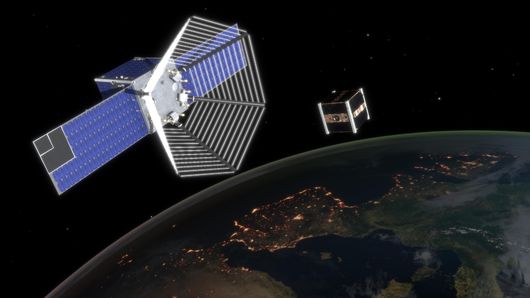India has executed convicted bomb plotter Yakub Memon for his role in a series of co-ordinated attacks that killed hundreds of people in Mumbai in 1993. Photograph: Money Sharma/AFP/Getty Images
India hanged Yakub Abdul Razzak Memon on Thursday for his role in the country’s deadliest bombings, which killed 257 people in Mumbai in 1993, after the Supreme Court rejected his final plea for a stay of execution.
Memon was convicted as the “driving spirit” behind the serial blasts in India’s financial capital Mumbai, then known as Bombay. He spent two decades in jail before going to the gallows on his 53rd birthday in a jail in the western city of Nagpur.
The execution drew wide public support but has stirred controversy about whether the punishment adequately reflected the help Memon gave authorities in solving the crime.
Critics question whether Memon’s death serves India’s larger interests, saying it sends the wrong message to potential collaborators with justice agencies.
In the days before his execution, it emerged that Memon had helped Indian intelligence crack the case and establish a link to neighbour and arch-rival Pakistan over the bombings.
“It’s extremely sad that India has gone ahead, we had been hoping India will now call for a moratorium,” said Meenakshi Ganguly, South Asia director for Human Rights Watch.
“But it’s very welcome that now there seems to be a growing debate around this in India.”
In a dramatic sequence of events, a Supreme Court panel held an unprecedented hearing in the early hours of Thursday, before rejecting Memon’s last-ditch plea for a 14-day delay in execution. Several previous pleas had also been rejected.
Police consider Memon’s brother, “Tiger” Memon, and mafia don Dawood Ibrahim to be the masterminds behind the attacks, intended to avenge the destruction of an ancient mosque by Hindu zealots in 1992. Both men remain in hiding.
Memon’s body was released for burial in Mumbai, with police deployed in riot gear to guard against possible street protests and security tightened at the family home.
All India Majlis-e-Ittehadul Muslimeen leader and Hyderabad parliamentarian Asaduddin Owaisi said the government should ensure death sentence in all similar cases.
"Death sentence should also be given to Babu Bajrangi, Maya Kodnani, Col. Purohit and Swami Aseemanand," he said.
Wider debate
For decades India had been reluctant to carry out death sentences, until it voted in 2012 against a UN draft resolution for a global moratorium on executions.
Memon’s execution was the third in less than three years, following an eight-year gap, said the Indian arm of rights group Amnesty International, which opposes the death penalty.
“The Indian government essentially killed a man in cold blood to show that killing is wrong,” its executive director, Aakar Patel, said.
Attack survivors welcomed the news, however. “The government has given us a ray of hope,” one man told news channel India Today, without giving his name. “We have to feel that full justice has been received.” - Reuters






















